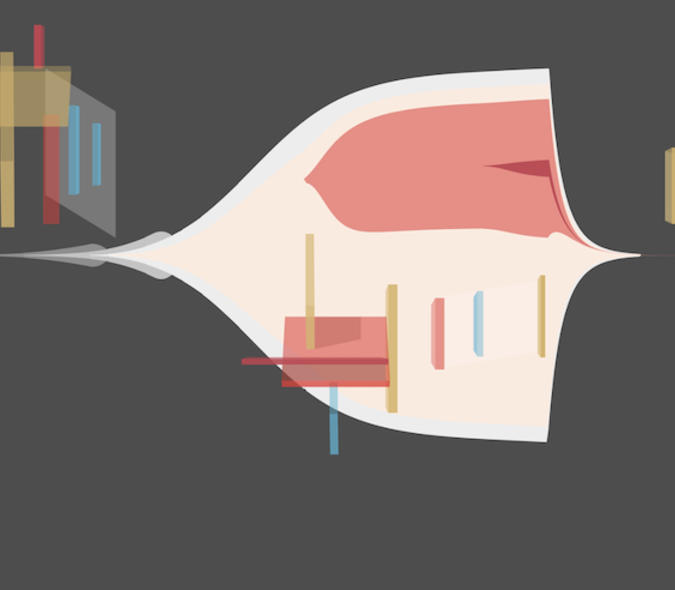
Czyzyk introduces his diabetes research findings to COVID-19
The COVID-19 pandemic has spawned a public health crisis unlike any seen since the Spanish influenza a century ago. Across the U.S. and around the world research institutions have launched rapid responses to the pandemic -- into COVID-19 treatments and vaccines, epidemiological models of how the novel coronavirus SARS-CoV-2 infection that causes COVID-19 spreads, and the pathogenesis of the virus in laboratory animals and the human body. Many scientists are taking what they know from studying a particular disease and creatively applying it to the crisis. Jan Czyzyk is one.
An LMP associate professor, Czyzyk is a physician-scientist with basic research interests in autoimmune diseases, in particular Type 1 Diabetes (T1D). Czyzyk has focused his investigations on how the balance between proteases – enzymes that break the peptide bonds of proteins -- and inhibitors of proteases called serpins -- a protein family that plays a critical role in limiting tissue injury by inhibiting proteinases -- affect inflammation and tissue regeneration of pancreatic islet cells. Studies in Czyzyk’s laboratory suggest that an immune response to the serpinB13 protease inhibitor, and the resulting increase in protease activity, could inhibit or prevent the destruction of pancreatic islet cells in T1D patients.
Czyzyk and his team have developed a recombinant humanized anti-serpin B13 monoclonal antibody that could have therapeutic potential in T1D but also in COVID-19 patients. That’s because the coronavirus enters cells by binding to the cell-surface receptor angiotensin-converting enzyme 2 (ACE2) found in lung epithelial cells, and serpin is actively expressed in the cell-surface membranes of these cells.
“Since serpinB13 is expressed in lung epithelial cells and protease activity can cause cleavage and degradation of viral proteins as well as their entry receptors, we hypothesize that our monoclonal antibody to serpinB13 may show therapeutic potential in COVID-19,” Czyzyk said. The advantage of his research team’s approach “lies in the idea that the ability of the coronavirus to infect the lung may be compromised by blocking the serpin inhibitor and restoring the activity of its protease target.”
Serpin’s protease target in this case is cathepsin L whose expression is elevated by anti-serpinB13 activity. Cathepsin L is a potent protease that facilitates coronavirus binding to ACE2 receptors and entry into lung epithelial cells. The question is whether overexpression of cathepsin L by inhibiting serpinB13 expression makes it more difficult for coronavirus to bind to ACE2 receptors in lung epithelial cells – by disrupting the entry mechanism. Or might it actually enhance entry? “I understand our approach could potentially make things worse,” Czyzyk said, adding that his laboratory not only has antibodies to serpin but serpin itself in a recombinant form. “So in addition to the experiment we plan to do with the antibody, which should decrease [serpin expression], prevent viral entry and subsequent inflammation, we also can use recombinant serpin to test whether it’s doing the opposite.”
Controlling the inflammatory response in COVID-19 patients is turning out to be as important as targeting the coronavirus itself because rampant inflammation can cause patients to “drown” in their own lung fluids. Czyzyk’s said his anti-serpinB13 monoclonal antibodies possess anti-inflammatory properties. “We have shown that our monoclonal antibody enhances cathepsin L protease-mediated cleavage of key cell-surface molecules expressed in CD4+ T-cells, the cells that coordinate cell-mediated immunity,” Czyzyk said. “Since immune cell infiltration into the lung has been thought to contribute to pulmonary failure in COVID-19 patients, we propose that anti-serpinB13 monoclonal antibodies may be therapeutic -- not only by reducing overall coronavirus load, but also by suppressing the inflammatory response that follows lung invasion by this virus.”
There is a possibility that Czyzyk’s anti-serpinB13 monoclonal antibody could also serve as a prophylactic treatment for other coronaviruses, those yet to emerge included, if these viruses employ the serpinB13-cathepsin L cell-surface pathway to enter epithelial cells. Exploring such possibilities is a perhaps the wisest course given the crisis we confront.



